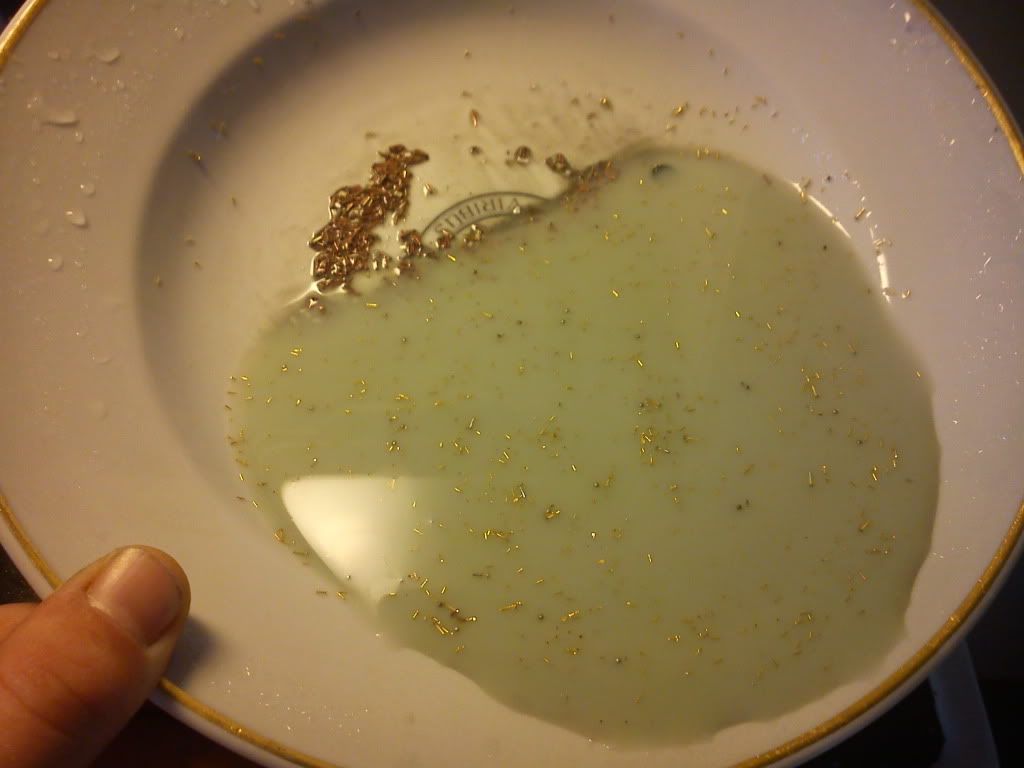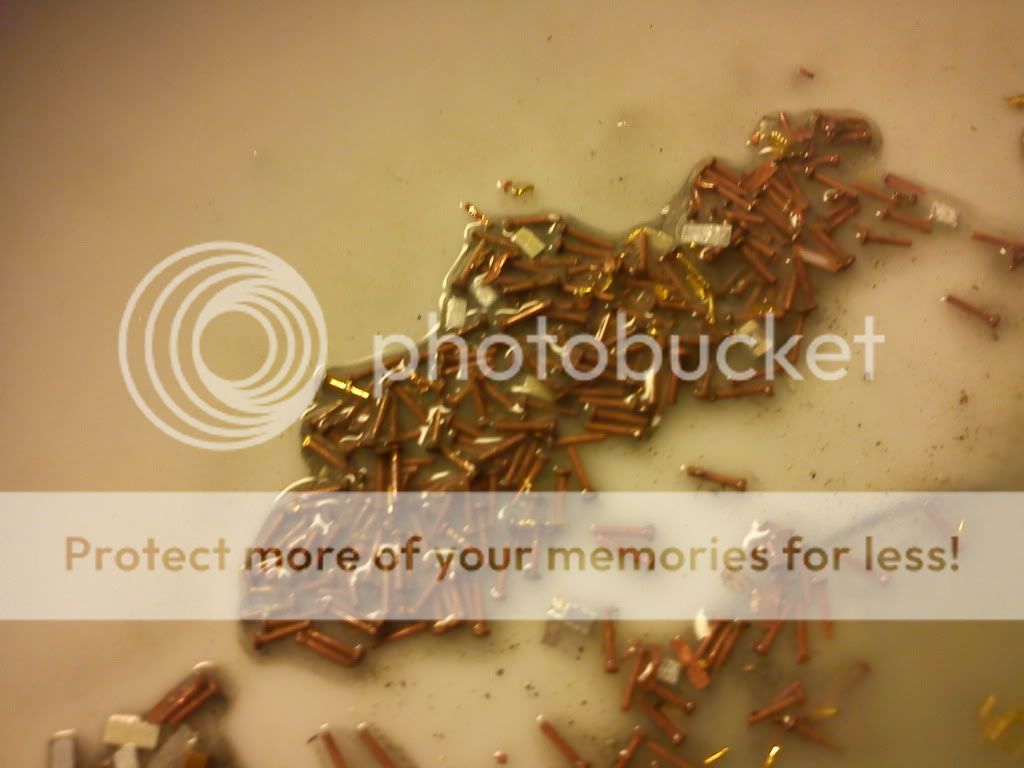TheGarbageManCan
Well-known member
- Joined
- Sep 21, 2010
- Messages
- 48
Hello GRF!
When i all of my pins have fallen of, using 30%nitric, ive stuck with this gray/turkish coler mud with my pins? What is it, and how do i desovle it, to get rid of it?
I tryed to mix mud/pins with HCL to wash it, it looks like it desolves the mud but now all my pins have turnet black instead..?
Allso only some of the pins seems to get hollow, what to do with the ones that dossent get attacket? Just boil in HCL? Maybe with the pins that have gone black to?
here a pic of the mud/pins in water trying to wash them. They dont even look like gold no more.


Thanks guys :mrgreen:
When i all of my pins have fallen of, using 30%nitric, ive stuck with this gray/turkish coler mud with my pins? What is it, and how do i desovle it, to get rid of it?
I tryed to mix mud/pins with HCL to wash it, it looks like it desolves the mud but now all my pins have turnet black instead..?
Allso only some of the pins seems to get hollow, what to do with the ones that dossent get attacket? Just boil in HCL? Maybe with the pins that have gone black to?
here a pic of the mud/pins in water trying to wash them. They dont even look like gold no more.


Thanks guys :mrgreen:




